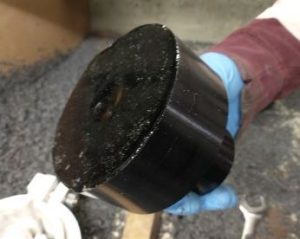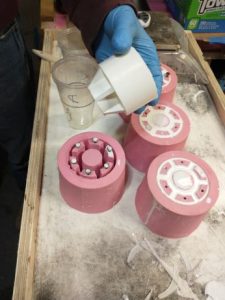Urethanes are two part mixes that form into a rubber or a hard plastic.
The main difference between a plastic, like polyethylene for example and a urethane is that urethanes require two constituents to be mixed together and then they harden into a set plastic-rubber material. Polyethylene, however, is a thermoplastic material and requires melting to be put into the shape, and then cooled. Urethanes will heat up when mixed, but not nearly as hot as a thermoplastic.
Urethanes come in all shapes and sizes—from super strong and rigid to flexible and rubbery, perfect for nearly any stress levels. Conveniently, urethanes readily accept dies and paint, which makes them ideal candidates for anything requiring a custom color. Being relatively inexpensive to make parts from, urethanes tend to need nothing more than a cheep mold to make a part. Surprisingly, they do not require heating or heavy and expensive machinery to manufacture parts from.
Imagine you wanted to make a prototype of a part.
First you could go the traditional route and spend thousands of dollars on machine equipment to make the part, or you could spend in the hundreds of dollars on some tooling and then twenty dollars more to make a part. And…behold: you have a part.
Additionally, the first way will take months, while with urethanes it can be done in several days. Although eac

h part costs probably somewhere between twelve and thirty dollars, depending on the size of the part, this is certainly cheaper than investing thousands of dollars in equipment. Especially if the design changes and you have to invest again.
Each time you invest the conventional way you throw at the project thousands of dollars, not to mention the lost time. While if you go the urethane route, the costs are a fraction of the traditional method.
Eventually you may want to invest in the heavy machinery so that you can reduce the price of the parts, but you don’t want to invest that money until you have a final part.
